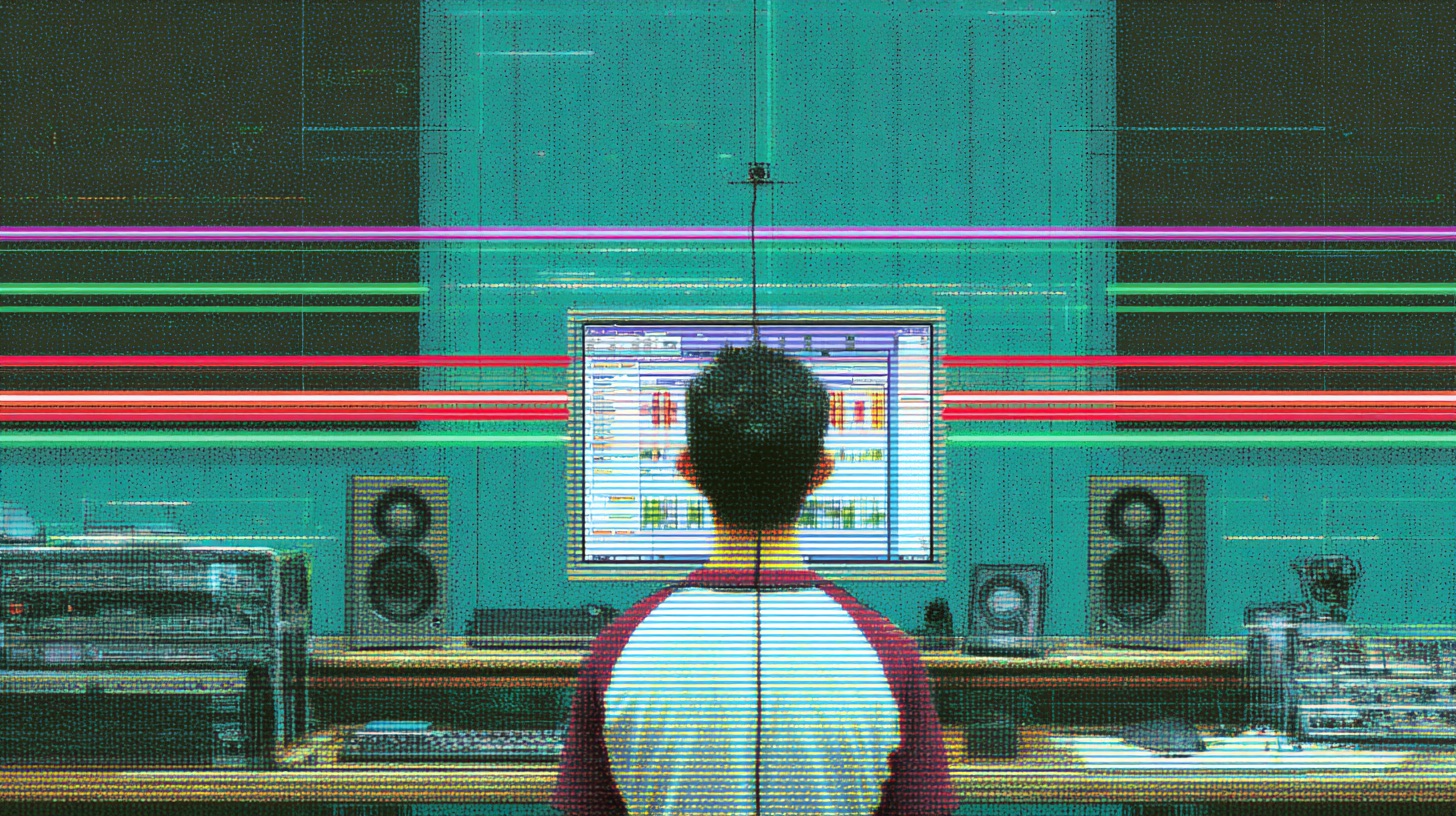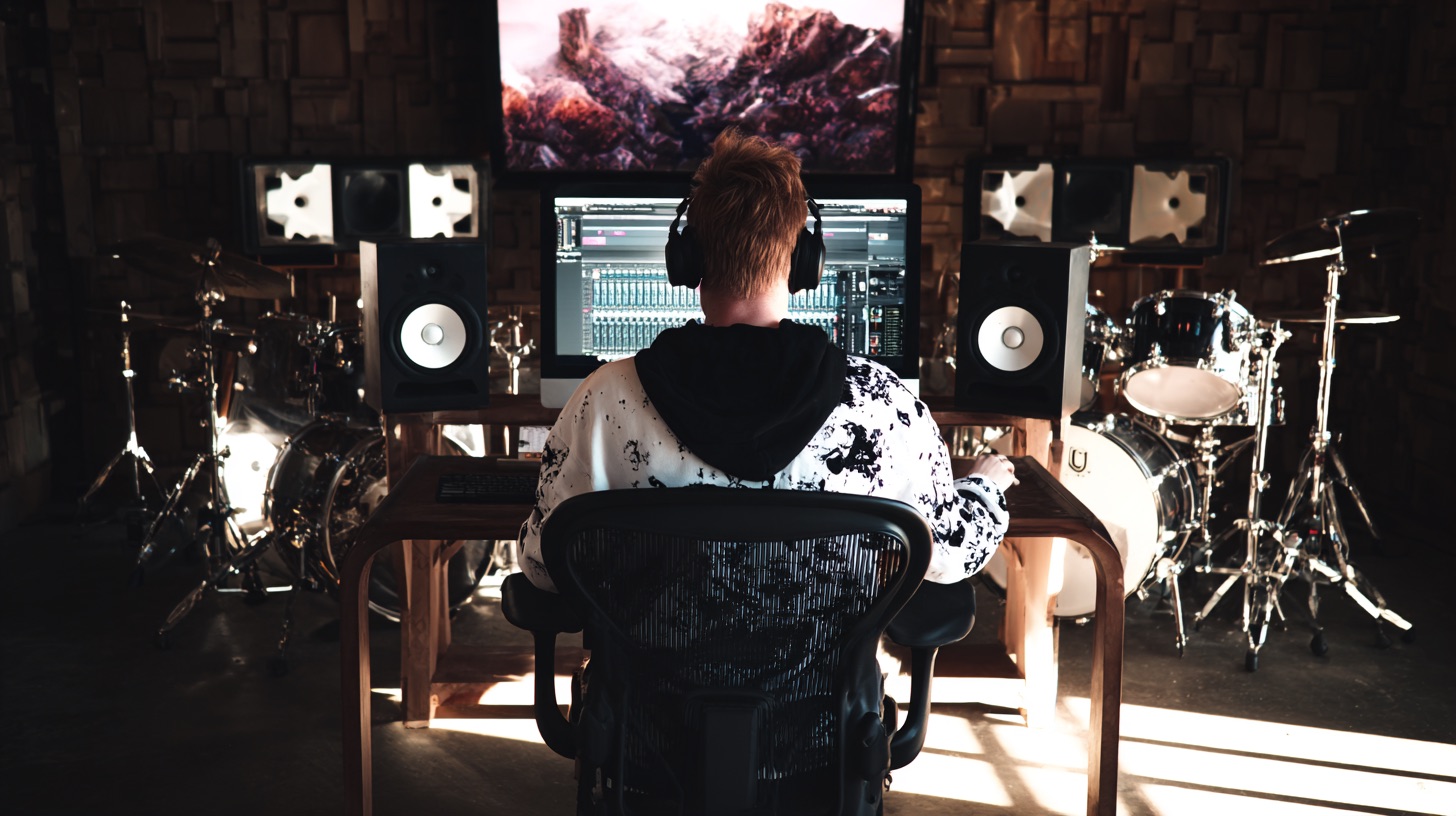
Jesse Zuretti’s Insane Synth Bass: A Deep Dive into Layering and Distortion
Nail The Mix Staff
The Foundation: A Complex Stack of Bass Layers
Right off the bat, it's clear this isn't your standard DI-and-amp-sim setup. The core of Jesse Zuretti’s bass sound is built from multiple, carefully selected layers, each with a specific job. The philosophy here is "more is more," creating a rich sonic tapestry from the ground up.
Start with a "Secret" Pre-Processed Core
The foundation begins with Jesse's own heavily processed bass track. This isn't a clean, raw sound; it's a pre-built tone that's already loaded with distortion and compression. By starting with a sound that already has a ton of character, the goal isn't to create aggression from scratch, but to shape and enhance the aggression that's already there.
Add Layers for Body and Connection
To this core, more layers are added to fill out the sonic spectrum and connect the bass to the other elements in the mix. This includes:
- A dedicated sub-bass track: This provides a clean, consistent low-frequency foundation. It’s all about feeling that deep rumble without interfering with the character of the main distorted layers.
- A bass guitar top-end layer: This layer is specifically designed to add some of that familiar string attack and clank, helping the entire bass monstrosity feel more connected to the heavily distorted guitars.
Get Creative with Extra Synth Layers
Still not satisfied, Joel added even more synth layers to the pile to push the sound further. He brought in a track with a distinct "computer gamey" vibe, using the powerhouse synth Xfer Serum to generate the sound. To make it even richer, this Serum patch was then run through a Synth Warmer plugin to add saturation and body. The point of all this layering? To guarantee absolute low-end consistency, ensuring that every note is audible and powerful, especially in the build-ups leading into the song's main hooks.
Dialing in the Aggression with Distortion and EQ
With all these layers in place, the next step is to glue them together and crank up the intensity. This involves a combination of custom distortion chains and surgical EQ strategies to make sure everything sits right.
Custom Distortion with Kilohearts Snap Heap
To make the bass distortion feel truly unique and integrated with the guitars, Joel duplicated the core bass layer and got to work with Kilohearts Snap Heap. Instead of using a stock preset, he built a custom effects chain, mapping multiple parameters inside Snap Heap to a single macro knob.
This is a killer technique. It means one simple knob turn can simultaneously tweak distortion gain, filter cutoff, modulation depth, and more. It allows for creating complex, evolving distortion textures that make the bass feel alive and perfectly in sync with the song's energy.
Sidechaining for Maximum Impact
Here's a pro-level trick that creates insane impact. The mix features a massive-sounding "doom synth" that pops in for key moments. To make sure it punches through, it triggers a sidechain compressor placed on the entire mix bus.
When that doom synth hits, the rest of the track—guitars, drums, everything—ducks down in volume by a few dB. This carves out a massive pocket of space for the synth's mid-range character to dominate, making the moment feel absolutely huge. It's an aggressive use of bus compression that adds serious dynamics and power.
Making Melodies Cut Through with Modulation
Jesse's track isn't just heavy; it's full of melodic sound design, hooks, and synth lines that function like a lead vocal. The challenge is making these elements slice through a dense mix where the kick, snare, guitars, and bass are all locked into a static, powerful stereo image. The solution? Movement.
The Valhalla Space Modulator Trick
To get these melodic synths to stay present, Joel reached for Valhalla Space Modulator. This versatile plugin can do everything from chorus and flanging to doubling, but here it's used for one key purpose: to keep the sound from ever sitting still. By applying this modulation, the synth melodies are constantly shifting and moving around the stereo field.
Why Movement Creates Presence
This constant motion is a powerful psychoacoustic trick. When a sound is static, our brains can start to tune it out. But a sound that's always evolving and finding a new spot in the mix is constantly being "rediscovered" by the listener's ear. This makes it feel consistently present and loud without you having to crank its fader and risk masking other important elements. It’s a brilliant way to maintain clarity and interest in a packed arrangement.
Tying It All Together
Building a modern, aggressive synth bass sound like Jesse Zuretti’s is all about creative, bold decisions. It’s a combination of:
- Massive layering of different bass sources for a full-spectrum sound.
- Custom macro-controlled distortion using plugins like Snap Heap.
- Aggressive mix-bus sidechaining to create impact for key elements.
- Clever use of modulation with tools like Valhalla Space Modulator to give melodic parts their own space.
These are the kinds of next-level techniques you can apply to your own productions. But reading about them is one thing; seeing them in action is another. In the full Nail The Mix session with Jesse Zuretti, you can watch Joel Wanasek build this incredible tone from the ground up, explaining every plugin choice and mixing decision along the way.
Ready to go beyond presets and start building your own unique tones? Check out the full Jesse Zuretti session and discover how you can unlock your sound mixing modern metal with Nail The Mix.
Get a new set of multi-tracks every month from a world-class artist, a livestream with the producer who mixed it, 100+ tutorials, our exclusive plugins and more
Get Started for $1






